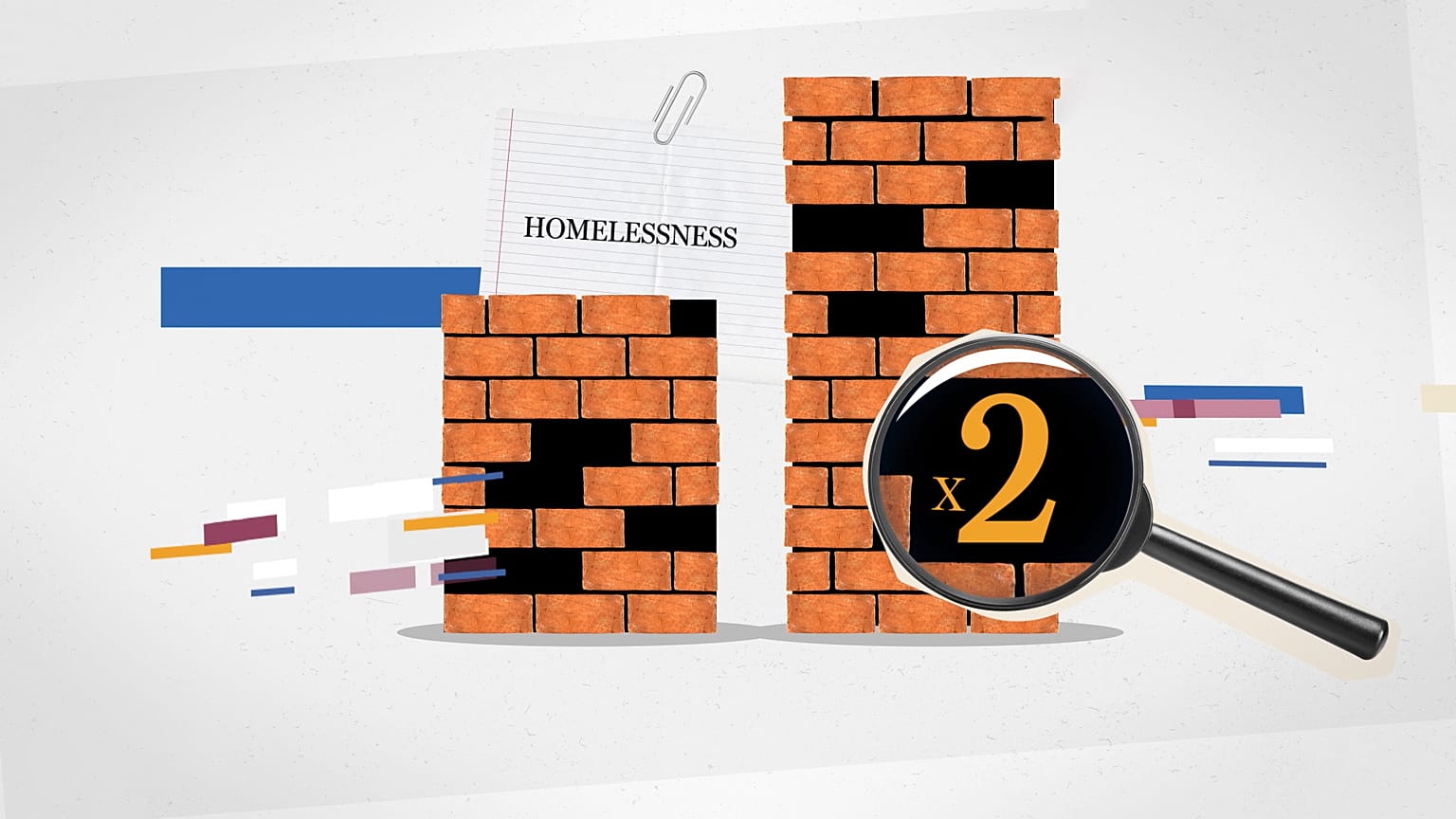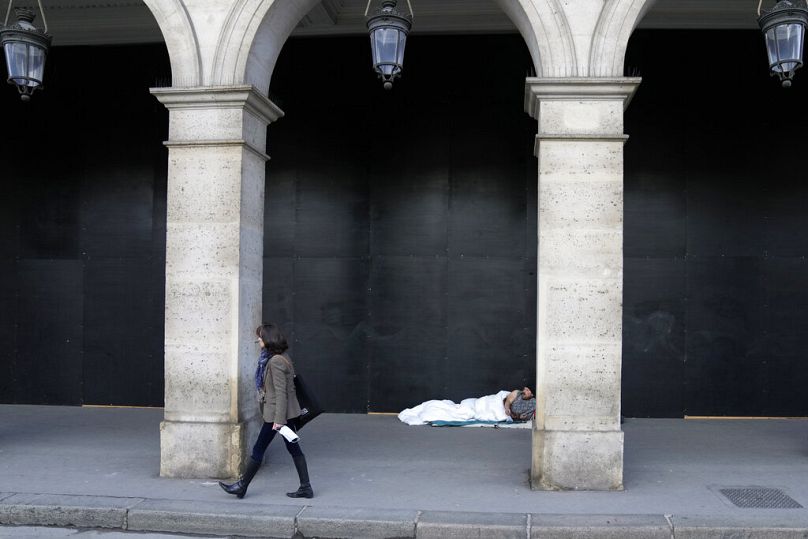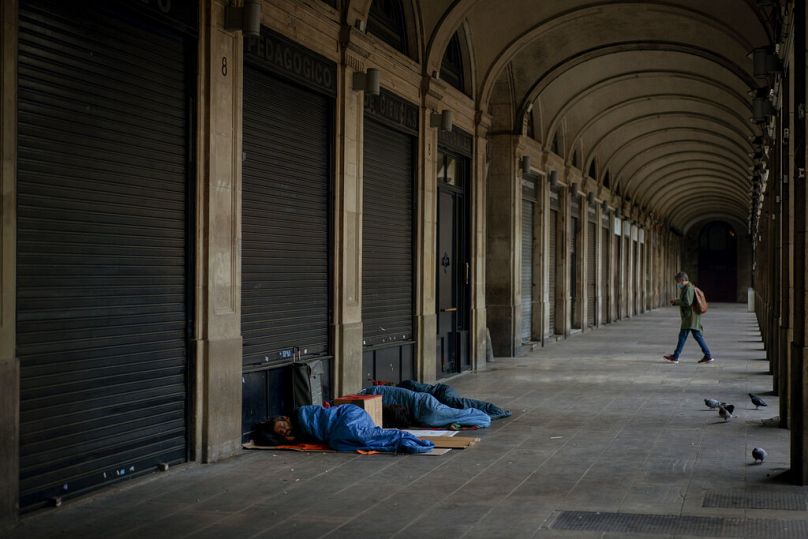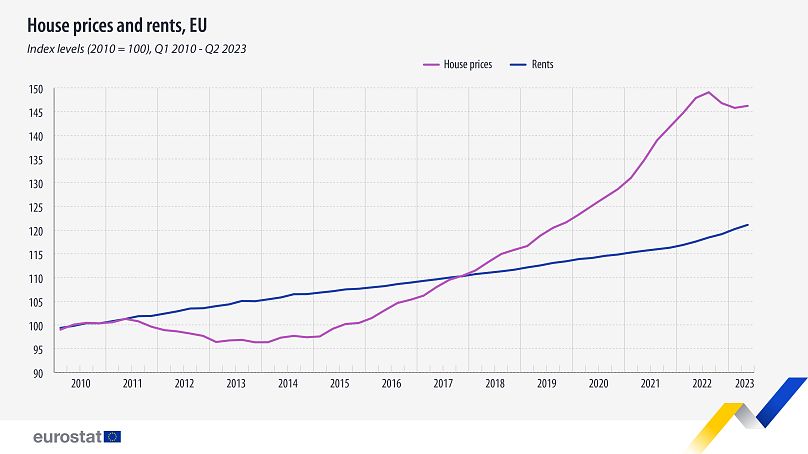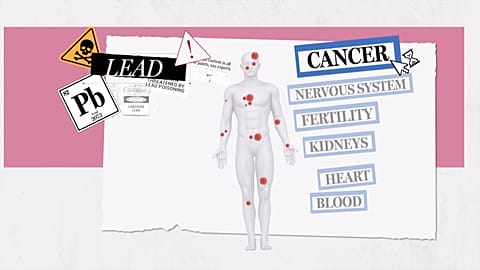More and more people in Europe have nowhere safe to call home. How is homelessness defined across the continent and what is fuelling the problem?
An estimated 900,000 people are sleeping rough across Europe according to a 2023 report published by FEANTSA, the Federation of National Organisations Working with the homeless.
However, experts say the number of people experiencing homelessness on any given day across the European continent is likely to be much higher than this estimate for several reasons.
For one, definitions of 'homelessness' vary from one EU member state to the next while quantifying homelessness remains a challenge across the continent due to a lack of comprehensive data collection methods.
Defining homelessness
The term 'homelessness' is used to describe very different realities across Europe, many member states do not have an official definition while working definitions in official documents are interchangeable.
A European study on national policies discovered that the Estonian government defines a homeless person as an individual with no legal documentation to prove they own or are renting a building or room qualifying as a living space. Additionally, Estonia recognises that homeless individuals do not have the necessary income or skills to change their situation.
In contrast, Italy defines homeless people as those who are 'roofless' or 'houseless' and excludes individuals or groups who live in temporary shelters or inadequate housing.
Similarly in Malta, where there is no official definition, only individuals who are reportedly sleeping rough are recognised as homeless.
While these differences make it difficult for experts to quantify homelessness, FEANTSA argues that homelessness is on the rise in almost every country across the continent.
To help governments, research groups and experts better measure homelessness in Europe, the NGO developed the ETHOS framework in 2005 which was later revised in 2017. According to FEANTSA, homelessness includes:
- Rooflessness - people living rough and people in emergency accommodation.
- Houselessness - people in accommodation for the homeless including women’s shelters and accommodation for migrants. Houselessness also covers individuals due to be released from institutions and people receiving long-term support due to homelessness.
- Individuals living in insecure housing threatened with severe exclusion due to insecure tenancies, eviction, and domestic violence.
- Individuals living in inadequate housing such as caravans on illegal campsites, in unfit housing or those experiencing extreme overcrowding.
What are some of the main issues fuelling homelessness?
A November 2023 study commissioned by the European Parliament's Committee on Petitions (PETI) highlighted that disadvantaged groups are most at risk of homelessness. Some of the factors negatively impacting disadvantaged groups include housing affordability, housing availability, the cost of living crisis, stagnating wages, domestic abuse and the reach of welfare systems.
In 2022, almost one in 10 people in the EU spent more than 40 per cent of their income on accommodation. Despite being enshrined in the European Pillar of Social Rights as a fundamental human right, many people still struggle to put a roof over their heads.
According to Eurostat, the European Commission's statistics office, house prices more than doubled in Estonia, Hungary, Lithuania, Latvia, the Czech Republic, Luxembourg and Austria between 2010 and the second quarter of 2023. Additionally, when comparing the second quarter of 2023 with 2010, house prices increased more than rents in 20 out of the 27 EU countries.
PETI argues that the groups most at risk of falling into homelessness due to lack of home affordability are families with children and single-parent households. In addition overcrowding, mould, dampness, exposure to pollution and poor sanitation are a growing concern when it comes to assessing inadequate housing conditions.
Ireland is currently experiencing record levels of homelessness. Last October the Irish Department of Housing found there were over 9,000 adults and nearly 4,000 children living in emergency accommodation. While the shortage of affordable housing in Ireland is a major factor, a lack of available accommodation is also a driving force behind the current trend.
In 2023, the Irish government estimated there was a shortage of 250,000 houses, apartments and duplexes, and on 1 August 2023, fewer than 1,200 homes were available to rent nationwide.
According to the European Commission, the average wage across the EU increased by 6 per cent in 2023, but this marginal increase has not effectively made up for rising inflation rates.
So, what are governments and NGOs doing to tackle homelessness? Find out in our latest episode of Real Economy by clicking on the link here.














